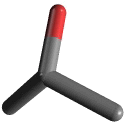|
STRONTIUM ISOPROPOXIDE |
| Synonyms. Strontium isopropoxide; Strontium propan-2-olate; Strontium isopropylate; Strontiumdiisopropoxide; |
| PRODUCT IDENTIFICATION | |
|
CAS RN |
88863-33-6 |
|
EINECS RN |
|
|
FORMULA |
Sr(OCH(CH3)2)2 |
|
MOLE WEIGHT |
205.79 |
|
H.S CODE |
2931.90.9050 |
|
SMILES |
CC(C)[O-].CC(C)[O-].[Sr+2] |
|
CLASSIFICATION |
|
|
EXTRA NOTES |
|
|
|
| PHYSICAL AND CHEMICAL PROPERTIES | |
|
PHYSICAL STATE. |
white to pale yellow powder |
|
MELTING POINT |
130 C |
|
BOILING POINT |
Decomposes |
|
DENSITY |
|
|
SOLUBILITY IN WATER |
Reacts slowly |
| SOLVENT SOLUBILITY |
Soluble in hydrocarbons, isopropanol, reacts with other alcohols, ketones and esters |
|
VAPOR DENSITY |
|
|
log P(octanol-water) |
|
|
VAPOR PRESSURE |
|
|
AUTOIGNITION TEMP |
|
| pK |
|
|
REFRACTIVE INDEX |
|
|
FLASH POINT |
|
|
|
| STABILITY AND REACTIVITY | |
| STABILITY | Stable under normal conditions. Moisture sensitive |
|
INCOMPATIBLE MATERIALS |
Strong oxidizing agents, Strong acids, Strong bases |
| POLYMERIZATION |
Has not been reported |
|
NFPA RATINGS |
Health: 3, Flammability: 0, Reactivity: 1 |
|
|
| EXTERNAL LINKS & GENERAL DESCRIPTION |
|
USA.gov - Strontium isopropoxide Google Scholar Search - Strontium isopropoxide PubChem Compound Summary - Strontium isopropoxide NCBI (http://www.ncbi.nlm.nih.gov/) - Strontium isopropoxide |
|
|
| SALES SPECIFICATION | |
|
APPEARANCE |
white to pale yellow powder |
|
ASSAY |
99% min |
|
TRACE ELEMENTS |
Ba < 0.25% |
|
|
| TRANSPORT & REGULATORY INFORMATION | |
|
UN NO. |
3205 |
| HAZARD CLASS |
4.2 |
| PACKING GROUP | III |
|
|
| SAFETY INFORMATION | |
|
HAZARD OVERVIEW |
GHS (Globally Harmonised System) Classification: Flammable solids, Self-heating substances and mixtures, Skin corrosion, Serious eye damage. |
| SIGNAL WORD | Danger |
|
PICTOGRAMS |
|
|
HAZARD STATEMENTS |
H228 Flammable solid. |
|
PRECAUTIONARY STATEMENTS |
P210 Keep away from heat/sparks/open flames/hot surfaces. - No smoking. |
| EC DIRECTIVES |
|
| HAZARD CODES |
|
|
RISK PHRASES |
34 Causes burns |
|
SAFETY PHRASES |
16 Keep away from sources of ignition - No smoking |
|
|
| PACKING |
|
Preserve in light-resistant and well-closed containers |
|
|
| PRICE INFORMATION |
|
|


